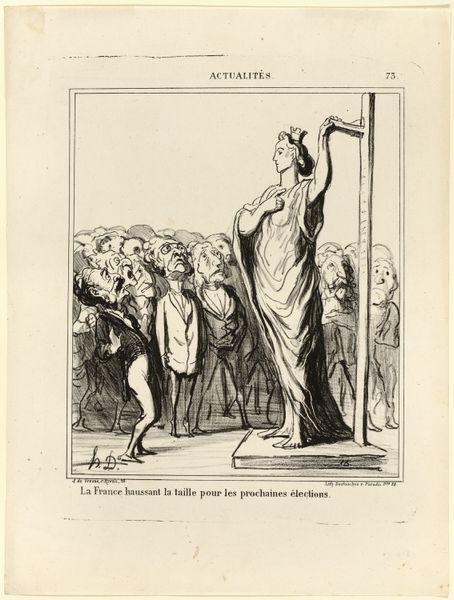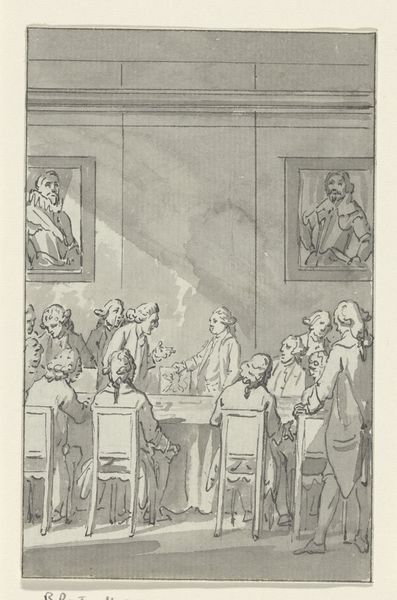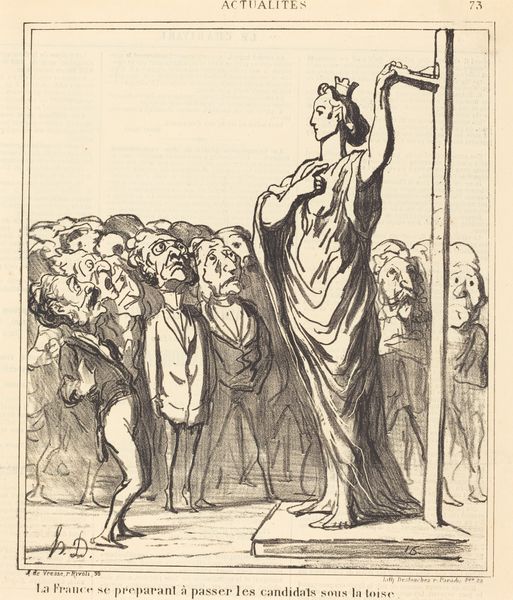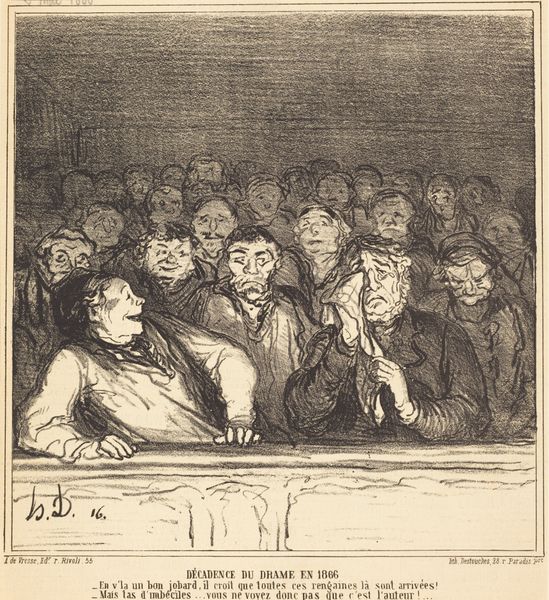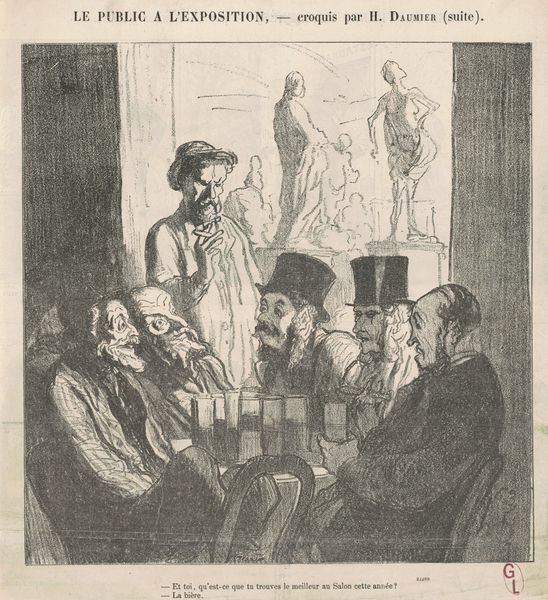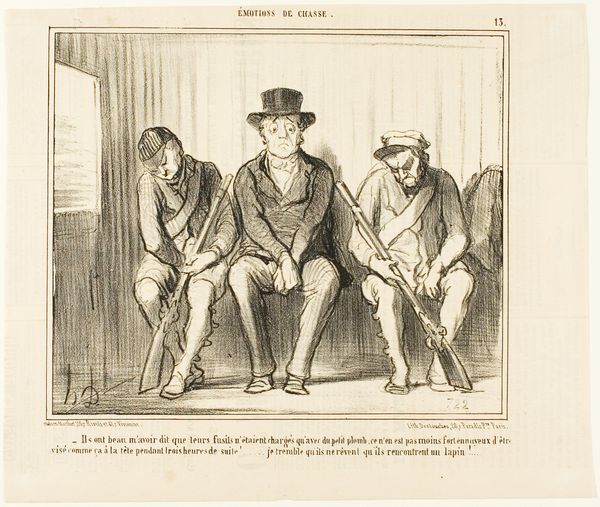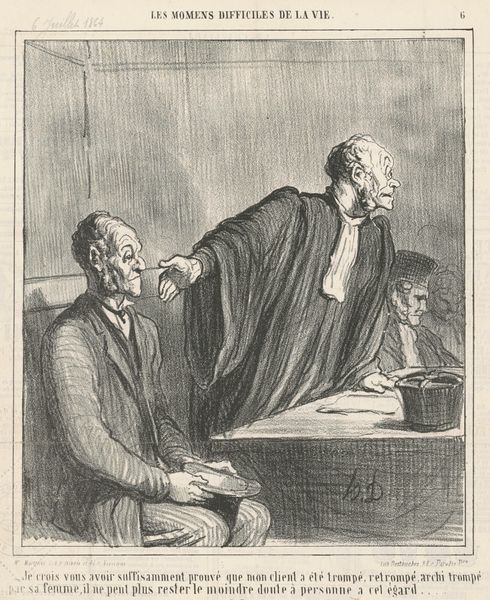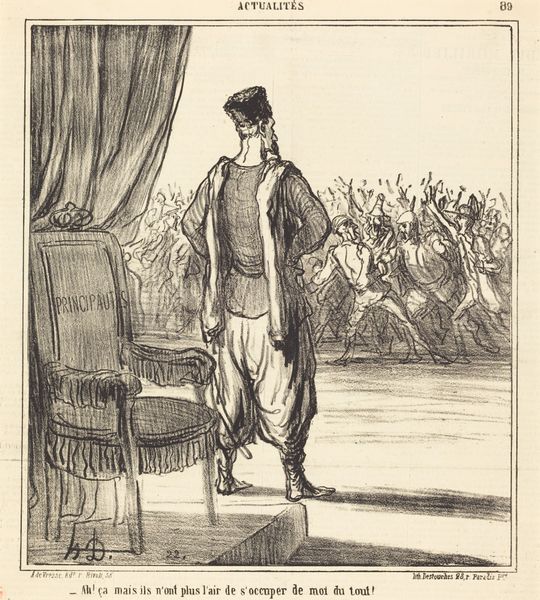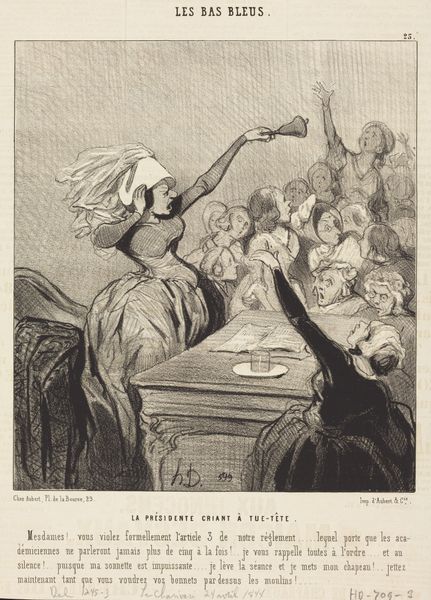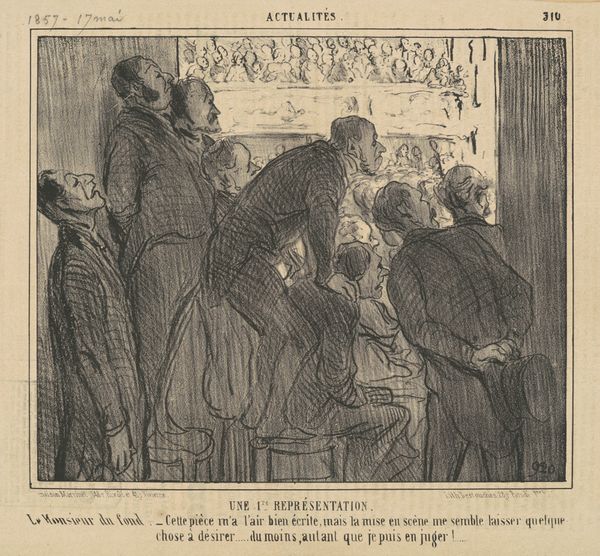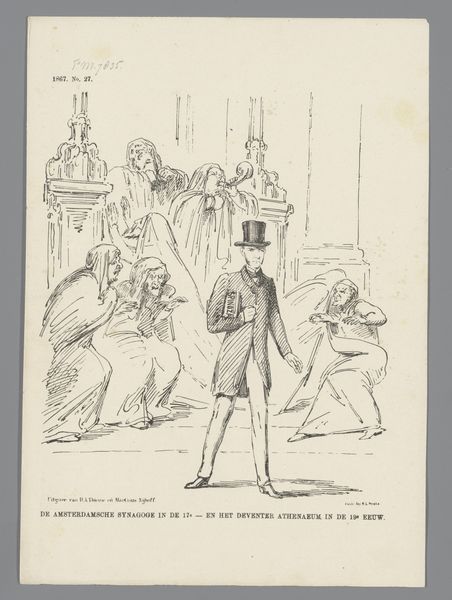
Run-Off Elections. “- Will she invite me for a second waltz?,” plate 114 from Actualités 1869
0:00
0:00
drawing, lithograph, print, paper
#
drawing
#
lithograph
# print
#
caricature
#
paper
#
genre-painting
Dimensions: 240 × 205 mm (image); 302 × 248 mm (sheet)
Copyright: Public Domain
Editor: So, this lithograph on paper is titled "Run-Off Elections," or "Will she invite me for a second waltz?" by Honoré Daumier, dating back to 1869. There's a satirical quality, with these figures awaiting attention from "France." What are your initial thoughts on this piece? Curator: The magic of Daumier lies in how he utilized relatively inexpensive materials – lithographic crayon, paper, and the printing press – to mass-produce social commentary. He targeted a burgeoning middle class, eager for accessible political critiques. Look at the deliberate mark-making; those heavy lines conveying weariness, even decay, amongst the politicians. How does that production relate to the message itself? Editor: It's interesting that you mention the middle class, and the weariness does come through. Were prints a popular way to circulate opinions at the time, like social media today? Curator: Absolutely. Prints, particularly in newspapers and journals, were a vital mode of communication. Daumier’s caricatures weren’t just about artistic skill; they were about engaging with pressing social and political issues. The materiality – the accessibility of the medium – amplified his reach. Think about the economics of it; mass production allowing for wider dissemination of his criticisms. It is also a play with who is left out. Who were Daumier’s consumer base, and how might his political and social critique have shaped that market’s sense of self? Editor: So the means of production became an intrinsic part of the artwork's message. It democratized art in a way. Curator: Precisely. It blurred the lines between high art and popular culture. It was reproducible, disposable even, and inherently engaged with the mechanisms of power it sought to critique. It makes you consider how artworks function within economies of labor, material, and consumption. What do you think? Editor: That makes a lot of sense, seeing it now as part of a much bigger production process, influencing opinion at a specific time. Thanks for explaining that. Curator: My pleasure. Hopefully that illuminates new avenues for analyzing artistic intention and output in its era.
Comments
No comments
Be the first to comment and join the conversation on the ultimate creative platform.
